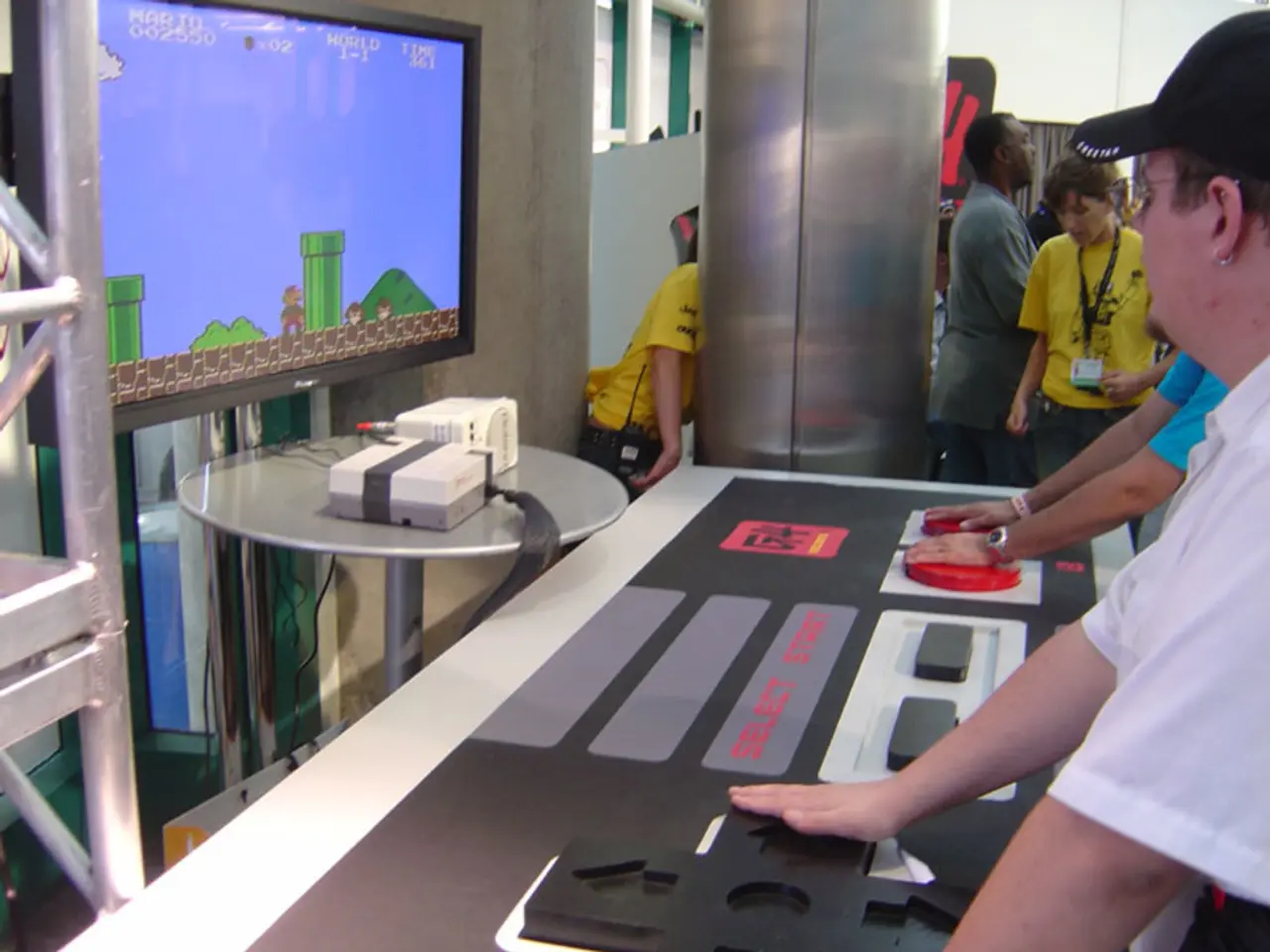Status as of January 23, 2025: Availability of NextGen TV via ATSC 3.0 Deployments: Locations and Timelines
In the United States, the rollout of ATSC 3.0, also known as NextGen TV, is progressing steadily but not yet fully completed. As of January 2025, over 80 U.S. markets are transmitting ATSC 3.0 signals, reaching more than 75% of the population [1][2][3].
The cities where ATSC 3.0 signals are available include Albuquerque-Santa Fe, N.M., Albany, N.Y., Atlanta, Austin, Texas, Baltimore, Birmingham, Ala., Boise, Idaho, Boston, Buffalo, N.Y., Champaign & Springfield-Decatur, Ill., Charlotte, N.C., Charleston S.C., Chicago, Ill., Cincinnati, Ohio, Columbus, Ohio, Cookeville, Tenn., Dallas-Fort Worth, Texas, Dayton, Ohio, Denver, De Moines, Iowa, Detroit, East Lansing, Mich., El Paso, Texas, Flint, Mich., Fresno-Visalia, Calif., Green Bay, Wisc., Greensboro, N.C., Greenville-Spartanburg-Asheville-Anderson S.C., Grand Rapids-Kalamazoo, Mich., Harrisburg, Pa., Hartford, Conn., Houston, Indianapolis, Kansas City, Las Vegas, Louisville, Ky., Little Rock-Pine Bluff, Ark., Los Angeles, Miami, Fla., Minneapolis, Minn., Mobile, Ala.-Pensacola, Fla., Myrtle Beach-Florence, S.C., Nashville, Tenn., New Orleans, New York City, Norfolk-Portsmouth-Newport News, Va., Oklahoma City, Omaha, Orlando-Daytona Beach-Melbourne, Fla., Philadelphia, Phoenix, Pittsburgh, Portland, Maine, Portland, Ore., Raleigh-Durham, N.C., Richmond-Petersburg, Va., Roanoke-Lynchburg, Va., Rochester, N.Y., Sacramento-Stockton-Modesto, Calif., Salt Lake City, San Antonio, San Diego, San Francisco, Santa Barbara-Santa Marie-San Luis Obispo, Calif., Seattle-Tacoma, Shreveport, La., South Bend, Ind., Springfield, Mo., Springfield-Holyoke, Mass., St. Louis, Mo., Syracuse, N.Y., Tallahassee, Fla., Tampa-St. Petersburg-Sarasota, Fla., Tucson, Ariz., Twin Falls, Idaho, Washington D.C., West Palm Beach, Fla., Wichita-Hutchinson [2].
Broadcasters across all 50 states, the District of Columbia, and Puerto Rico have united in urging the Federal Communications Commission (FCC) to establish a clear, industry-wide, date-certain transition plan for the full deployment of ATSC 3.0 [1][2][3]. The National Association of Broadcasters (NAB) has proposed a sunset plan targeting February 2028 for the top 55 markets and full transition by February 2030 [1][3].
The transition to ATSC 3.0 promises several benefits, including superior picture and audio quality, interactive TV features, IP-based transmission similar to streaming platforms, and enhanced emergency alerting with multilingual, geo-targeted, sign language, and rich media alerts [2].
However, the transition remains voluntary due to regulatory and market uncertainties and reliance on spectrum-sharing agreements. Some local broadcasters and manufacturers have expressed concerns about mandatory requirements, such as built-in ATSC 3.0 tuners in TVs, and certain groups oppose specific transition timelines [1].
In specific locations like New Hampshire, PBS is actively rolling out NextGen TV signals in late 2025, reflecting ongoing regional deployment efforts beyond major metropolitan areas [4].
As of 2025, more than 14 million NextGen TV-capable devices have been shipped, demonstrating significant market readiness [2]. Over 75 models of NextGen TV-capable products are available at retail, with prices starting from between $600 and $700. Brands such as Sony, Samsung, Hisense, TCL, RCA, and Panasonic offer these products [2].
For more information and recommendations on NextGen TV sets, TV Tech's sister brand Tom's Guide has a comprehensive list [5].
[1] Advanced Television Systems Committee (ATSC). (2023). ATSC 3.0 Deployment. Retrieved from watchnextgentv.com
[2] Consumer Technology Association. (2024). NextGen TV: A New Era of Television. Retrieved from cta.tech/NextGenTV
[3] National Association of Broadcasters (NAB). (2023). ATSC 3.0 Transition. Retrieved from nab.org/advocacy/atsc-30-transition
[4] NextGen TV. (2024). PBS Rolls Out NextGen TV in New Hampshire. Retrieved from nextgentv.org/pbs-rolls-out-nextgen-tv-in-new-hampshire
[5] Tom's Guide. (2024). Best NextGen TV Sets. Retrieved from tomsguide.com/us/best-nextgen-tv-sets,review-15784.html
- The rollout of NextGen TV, or ATSC 3.0, in the United States operates in more than 80 markets as of January 2025, including cities like Albuquerque-Santa Fe, Atlanta, Austin, Texas, and Charlotte, North Carolina.
- Broadcasters across the nation have proposed a sunset plan to the Federal Communications Commission (FCC), targeting February 2028 for the top 55 markets and full transition by February 2030.
- The transition to ATSC 3.0 provides benefits such as superior picture and audio quality, interactive TV features, IP-based transmission like streaming platforms, and enhanced emergency alerting.
- Despite the regulatory and market uncertainties, more than 14 million NextGen TV-capable devices have been shipped, and over 75 models of these devices are now available at retail, starting from between $600 and $700.
- Municipalities like PBS in New Hampshire are actively deploying NextGen TV signals in late 2025, demonstrating ongoing efforts to extend coverage beyond major metropolitan areas.
- Several brands, such as Sony, Samsung, Hisense, TCL, RCA, and Panasonic, offer these NextGen TV-capable products available in the market.
- For consumers looking for recommendations on NextGen TV sets, Tom's Guide provides a comprehensive list with the best options available.




